by Corry Shores
[Search Blog Here. Index-tags are found on the bottom of the left column.]
[Central Entry Directory]
[Corry Shores, Entry Directory]
The following is my presentation at the Deleuze Studies International conference in Copenhagen, June 2011. Most of this material is drawn from a variety of previous entries.
Deleuze is often considered an anti-phenomenologist. Yet perhaps his critique of phenomenology is more of a constructive critique. Building a Deleuzean phenomenology will involve crafting various components, and today we will discuss the relations between the parts of the appearing world. In Merleau-Ponty's phenomenology, phenomena appear because they have parts which associate and integrate with one another. But our Deleuzean phenomenology will be based on the opposite principles. Phenomena will only appear when parts dissociate. My purpose here is to illustrate this distinction by means of Deleuze’s discussion of surrealism and dada.
We first consider Merleau-Ponty and the horizonal integration of the phenomenal parts of our world. For Merleau-Ponty, our phenomenal parts integrate by means of our horizonal awareness. Consider if we view a red carpet.
Each part of our perception looks its particular way on account of the other qualities and objects expressing themselves in that appearance, for example, the overlaying shadow that tinges the color or the illuminated portions that lighten its tone. We are not surprised when looking up to see the source of light and the objects that block it. The red’s particular shaded or lighted look refers our mind to things not explicit in what we directly perceive.
Or consider how a stream’s surface might reflect the brownish hue of an overlying bridge. When looking at the water, we are not directly aware of the bridge, but it is being implicitly spoken or announced by the stream’s color. The stream would appear differently to us were it not for its integrated relation with the bridge above it. And likewise, when looking up at the bridge, we see in its appearance the motion of the water, reflecting up upon it. Our minds have an awareness of these related phenomena, but they are not in the forefront of our attention. As implicit phenomena, they hover at the edges of our awareness.
This also applies to phenomena on our temporal horizon. Merleau-Ponty refers us to an early film experiment. See if you notice the subtle variations that a man’s face undergoes as he reacts to very different things appearing before him.
Perhaps we saw hunger on his face after the soup, grieving after the dead child, and longing following the woman.
But in fact, the film footage for the face is the same each time. While the face is in our focus, the preceding image has not completely disappeared from our awareness and instead remains looming at the margin.
Our awareness retains the prior image, which speaks itself in the current one, by modifying how we perceive it. In this way, all our temporal horizons interlace to produce phenomena not reducible to any one moment of our awareness.
So for Merleau-Ponty, phenomena are like a web of implicit associating relations. And on the basis of these implicated associations, we are motivated to turn our attention from one related thing to another. This would be something like a mechanical function.

(Animation above is my own, made with OpenOffice Draw and Unfreeze)
In fact, we see the mechanical forces of phenomenal motivation in Merleau-Ponty's example of a patient whose eyes have just become paralyzed. Normally her eyes would be motivated to move and explore the scene she sees. But when she tries to move her injured eyes to the left, the eyeballs remain physically fixed in their place. Nonetheless, the objects in her field of vision appear to move toward the right. The mechanical power of phenomenal motivation remains, even when the machinery of the eye breaks down.
Let’s consider instead phenomenal motivation from a Deleuzean perspective. Here is American filmmaker Stan Brakhage explaining the way things phenomenally stand-out and appear to him on the basis of odd dissociative relations.
So there is an alternate way to explain the mechanics of phenomenal motivation. Let’s first look at a very basic mechanism in a Dadaist work, the gears in Man Ray’s Dancer/Danger.

(scottzagar.com Thanks Scott Zagar)

(Animation above is my own, made with OpenOffice Draw and Unfreeze)
In one sense, the gears are conjoined, because they are meshed together. But in another sense, they are disjunctive, because their motions work differentially to one another. The coupling of differential functions produces intense interactions between the parts.
Yet such combinations of heterogeneous pieces can produce lethal war machines.

(Thanks Hillary Mayell for National Geographic News)

(Thanks Andy Wakely)
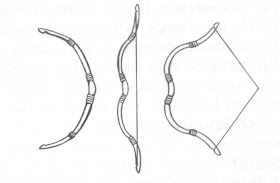
(Thanks Gerhard H. Kuhlmann)
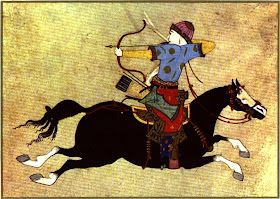
(Thanks The Skilliter Centre for Ottoman Studies)

(Thanks easterrossfieldarchers.org)

(Thanks mysteriousworld.com)
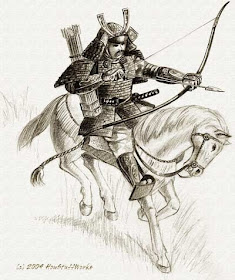
(Thanks howstuffworks.com)
For example, what do a horse, a man, and a bow and arrow have to do with one another? The conditions of battle on the steppes force these heterogeneous functions together.
Now surrealism. Consider this painting.
We notice that the objects at face value do not interrelate. Yet in a dream-like way, the parts cross-fertilize on the level of association. The gloves, ball, and sculpture might all associate with our hands, for example. In contrast, we consider something with more dadaist relations.
This work was inspired by a literary reference: QUOTE “the chance encounter of a sewing machine and an umbrella on a dissection table” ENDQUOTE. We see that the parts of this image do not mesh together, not even on another level of association.
Consider Clair’s Entr’acte, and observe the surreal dream-like associations between cuts. Deleuze notes how the cigarettes become Greek columns which then become the columns of a chess board.
But place in contrast a dream scene from Buster Keaton’s Sherlock Jr., where the parts are so dissociative that his adaptations to one scene prove maladaptive after the abrupt transition to another.
Deleuze refers us to Rube Goldberg’s cartoon machines to illustrate heterogeneous functions of a machine’s parts. Here is a famous one, which was animated on youtube.
But I would like to examine this one in particular. Notice the relations of the machine’s parts.
They are based on haphazard connections. Deleuze cites this following scene from Buster Keaton’s The High Sign as illustration for a dada Goldberg machine. Keaton could have simplified his contraption by excluding the dog. Yet by introducing it, he opens the door to unforeseen variations.
Deleuze also refers us to the trajectory gags in Keaton’s movies. They are chains of heterogeneous reactions. This is a scene from Sherlock Jr. followed by one from The Three Ages.
I offer these illustrations to better conceptualize a basic principle of Deleuzean phenomenology. Merleau-Ponty’s account seems convincing. But I think difference and dissociativity are more phenomenally productive than the redundancy of association and integration.
Recall the bridge illustration. For Merleau-Ponty, the water’s reflection on the bridge shows us how the water and the bridge are phenomenally integrated and imply one another. To see the bridge is already to have the river on the horizons of our awareness. However, what would be interesting for a Deleuzean phenomenology would be that instant when we first notice the reflection. It stands-out on account of a differential relation. Streams do not flow above our heads. This incompatibility of the phenomenal parts, the river motion discovered on a bridge above us, is more like the Dada relations between parts, rather than like the surrealist implicit associations. Yet, streams do in fact imply bridges. However, water motion does not suggest anything about being above our heads. When phenomenal parts are forced together while remaining incompatible, our awareness turns toward them and we feel the flash or shock of the phenomenal appearance.
I will close with an illustration from Lang’s Metropolis to show why incompatibilities are more phenomenal than integrations. The hero here believes that his female inspiration is someone who could only exhibit pure goodness. But a mad scientist secretly captures her and manufactures an evil robot double. When the hero sees the machine-woman, he cannot reconcile her human image with her evil robot behavior. The phenomenon here is neither the woman he remembers nor the machine he now sees. Rather, the phenomenon is the shock he feels from their impossible combination. I propose that a Deleuzean phenomenology be based on such phenomenal shocks of difference.
Image credits:
Dada & Phenomena:
Butchering Merleau-Ponty's Flesh
with Deleuze's Differential Machines
Butchering Merleau-Ponty's Flesh
with Deleuze's Differential Machines
Deleuze is often considered an anti-phenomenologist. Yet perhaps his critique of phenomenology is more of a constructive critique. Building a Deleuzean phenomenology will involve crafting various components, and today we will discuss the relations between the parts of the appearing world. In Merleau-Ponty's phenomenology, phenomena appear because they have parts which associate and integrate with one another. But our Deleuzean phenomenology will be based on the opposite principles. Phenomena will only appear when parts dissociate. My purpose here is to illustrate this distinction by means of Deleuze’s discussion of surrealism and dada.
We first consider Merleau-Ponty and the horizonal integration of the phenomenal parts of our world. For Merleau-Ponty, our phenomenal parts integrate by means of our horizonal awareness. Consider if we view a red carpet.
Each part of our perception looks its particular way on account of the other qualities and objects expressing themselves in that appearance, for example, the overlaying shadow that tinges the color or the illuminated portions that lighten its tone. We are not surprised when looking up to see the source of light and the objects that block it. The red’s particular shaded or lighted look refers our mind to things not explicit in what we directly perceive.
Or consider how a stream’s surface might reflect the brownish hue of an overlying bridge. When looking at the water, we are not directly aware of the bridge, but it is being implicitly spoken or announced by the stream’s color. The stream would appear differently to us were it not for its integrated relation with the bridge above it. And likewise, when looking up at the bridge, we see in its appearance the motion of the water, reflecting up upon it. Our minds have an awareness of these related phenomena, but they are not in the forefront of our attention. As implicit phenomena, they hover at the edges of our awareness.
This also applies to phenomena on our temporal horizon. Merleau-Ponty refers us to an early film experiment. See if you notice the subtle variations that a man’s face undergoes as he reacts to very different things appearing before him.
Seconds from Kuleshov Effect footage
Perhaps we saw hunger on his face after the soup, grieving after the dead child, and longing following the woman.
But in fact, the film footage for the face is the same each time. While the face is in our focus, the preceding image has not completely disappeared from our awareness and instead remains looming at the margin.
Our awareness retains the prior image, which speaks itself in the current one, by modifying how we perceive it. In this way, all our temporal horizons interlace to produce phenomena not reducible to any one moment of our awareness.
So for Merleau-Ponty, phenomena are like a web of implicit associating relations. And on the basis of these implicated associations, we are motivated to turn our attention from one related thing to another. This would be something like a mechanical function.
(Animation above is my own, made with OpenOffice Draw and Unfreeze)
In fact, we see the mechanical forces of phenomenal motivation in Merleau-Ponty's example of a patient whose eyes have just become paralyzed. Normally her eyes would be motivated to move and explore the scene she sees. But when she tries to move her injured eyes to the left, the eyeballs remain physically fixed in their place. Nonetheless, the objects in her field of vision appear to move toward the right. The mechanical power of phenomenal motivation remains, even when the machinery of the eye breaks down.
Let’s consider instead phenomenal motivation from a Deleuzean perspective. Here is American filmmaker Stan Brakhage explaining the way things phenomenally stand-out and appear to him on the basis of odd dissociative relations.
So there is an alternate way to explain the mechanics of phenomenal motivation. Let’s first look at a very basic mechanism in a Dadaist work, the gears in Man Ray’s Dancer/Danger.

(scottzagar.com Thanks Scott Zagar)
(Animation above is my own, made with OpenOffice Draw and Unfreeze)
In one sense, the gears are conjoined, because they are meshed together. But in another sense, they are disjunctive, because their motions work differentially to one another. The coupling of differential functions produces intense interactions between the parts.
Yet such combinations of heterogeneous pieces can produce lethal war machines.

(Thanks Hillary Mayell for National Geographic News)

(Thanks Andy Wakely)

(Thanks Gerhard H. Kuhlmann)

(Thanks The Skilliter Centre for Ottoman Studies)

(Thanks easterrossfieldarchers.org)

(Thanks mysteriousworld.com)

(Thanks howstuffworks.com)
For example, what do a horse, a man, and a bow and arrow have to do with one another? The conditions of battle on the steppes force these heterogeneous functions together.
Now surrealism. Consider this painting.
We notice that the objects at face value do not interrelate. Yet in a dream-like way, the parts cross-fertilize on the level of association. The gloves, ball, and sculpture might all associate with our hands, for example. In contrast, we consider something with more dadaist relations.
Man Ray. Reproduction of L'image d'Isidore Ducasse
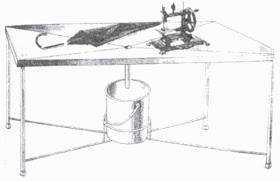
(Renée Riese Hubert. Surrealism and the Book, p.193.)

(Renée Riese Hubert. Surrealism and the Book, p.193.)
This work was inspired by a literary reference: QUOTE “the chance encounter of a sewing machine and an umbrella on a dissection table” ENDQUOTE. We see that the parts of this image do not mesh together, not even on another level of association.
Consider Clair’s Entr’acte, and observe the surreal dream-like associations between cuts. Deleuze notes how the cigarettes become Greek columns which then become the columns of a chess board.
But place in contrast a dream scene from Buster Keaton’s Sherlock Jr., where the parts are so dissociative that his adaptations to one scene prove maladaptive after the abrupt transition to another.
Deleuze refers us to Rube Goldberg’s cartoon machines to illustrate heterogeneous functions of a machine’s parts. Here is a famous one, which was animated on youtube.
But I would like to examine this one in particular. Notice the relations of the machine’s parts.
They are based on haphazard connections. Deleuze cites this following scene from Buster Keaton’s The High Sign as illustration for a dada Goldberg machine. Keaton could have simplified his contraption by excluding the dog. Yet by introducing it, he opens the door to unforeseen variations.
Deleuze also refers us to the trajectory gags in Keaton’s movies. They are chains of heterogeneous reactions. This is a scene from Sherlock Jr. followed by one from The Three Ages.
I offer these illustrations to better conceptualize a basic principle of Deleuzean phenomenology. Merleau-Ponty’s account seems convincing. But I think difference and dissociativity are more phenomenally productive than the redundancy of association and integration.
Recall the bridge illustration. For Merleau-Ponty, the water’s reflection on the bridge shows us how the water and the bridge are phenomenally integrated and imply one another. To see the bridge is already to have the river on the horizons of our awareness. However, what would be interesting for a Deleuzean phenomenology would be that instant when we first notice the reflection. It stands-out on account of a differential relation. Streams do not flow above our heads. This incompatibility of the phenomenal parts, the river motion discovered on a bridge above us, is more like the Dada relations between parts, rather than like the surrealist implicit associations. Yet, streams do in fact imply bridges. However, water motion does not suggest anything about being above our heads. When phenomenal parts are forced together while remaining incompatible, our awareness turns toward them and we feel the flash or shock of the phenomenal appearance.
I will close with an illustration from Lang’s Metropolis to show why incompatibilities are more phenomenal than integrations. The hero here believes that his female inspiration is someone who could only exhibit pure goodness. But a mad scientist secretly captures her and manufactures an evil robot double. When the hero sees the machine-woman, he cannot reconcile her human image with her evil robot behavior. The phenomenon here is neither the woman he remembers nor the machine he now sees. Rather, the phenomenon is the shock he feels from their impossible combination. I propose that a Deleuzean phenomenology be based on such phenomenal shocks of difference.
Seconds from Fritz Lang's Metropolis,
showing the Deleuzean phenomenon
showing the Deleuzean phenomenon
Image credits:
Ray. Man Ray. Dancer / Danger, Impossibility.
(scottzagar.com Thanks Scott Zagar)
http://www.skilliter.newn.cam.ac.uk/frontier.shtml
(Thanks The Skilliter Centre for Ottoman Studies)
http://www.easterrossfieldarchers.org/history2.html
(Thanks easterrossfieldarchers.org)
http://www.mysteriousworld.com/Journal/2003/Autumn/Giants/
(Thanks mysteriousworld.com)
http://people.howstuffworks.com/samurai.htm/printable
(Thanks howstuffworks.com)
http://andywakeley.com/blog/2008/04/21/a-few-more-horse-sketches/
(Thanks Andy Wakely)
http://www.ghkuhlmann.de/kureng/glossary.html
(Thanks Gerhard H. Kuhlmann)
http://www.abolitionist.com/darwinian-life/genghis-khan.html
(Thanks Hillary Mayell for National Geographic News)
de Chirico. Song of Love
http://www.mattesonart.com/magic-realism-giorgio-de-chirico-.aspx
(Thanks Matteson Art)
Hubert, Renée Riese. Surrealism and the Book. Berkeley/Los Angeles/London: University of California Press, 1988.
Preview available at:
http://books.google.be/books?id=9_3g0tHPgPwC&hl=en&source=gbs_navlinks_s
Rube Goldberg napkin picture
http://www.libertylive.org/blog_main/post.php?post_id=1687
(Thanks libertylive.org)
Rube Goldberg animation
Thanks rockingood
http://www.youtube.com/watch?v=5WApE5eeaf0






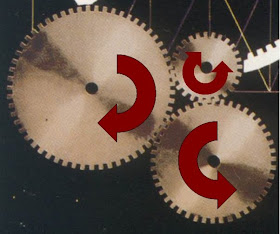
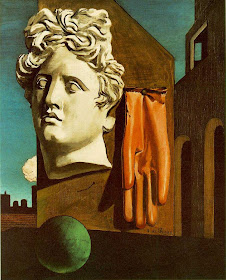
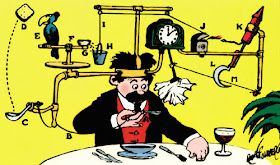

No comments:
Post a Comment